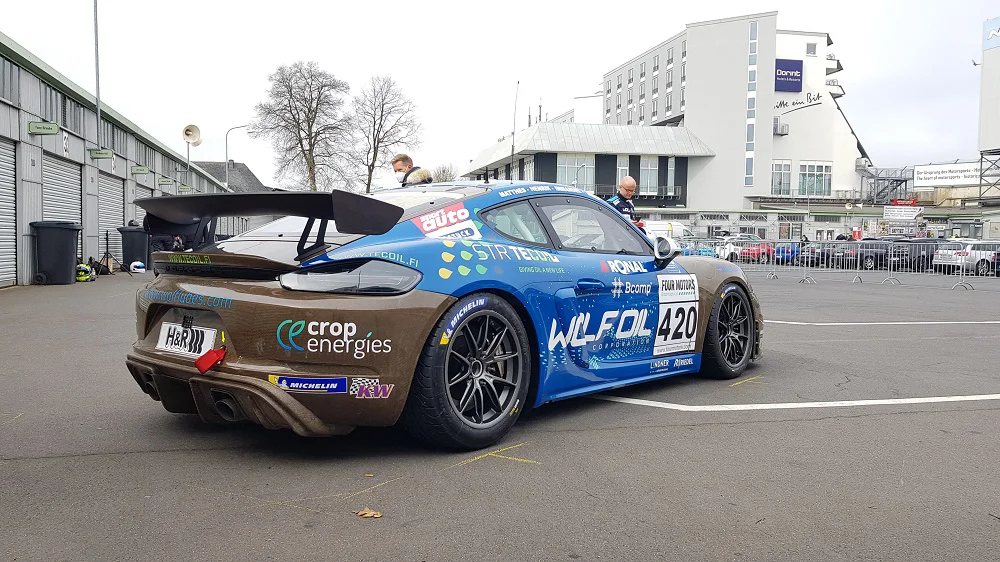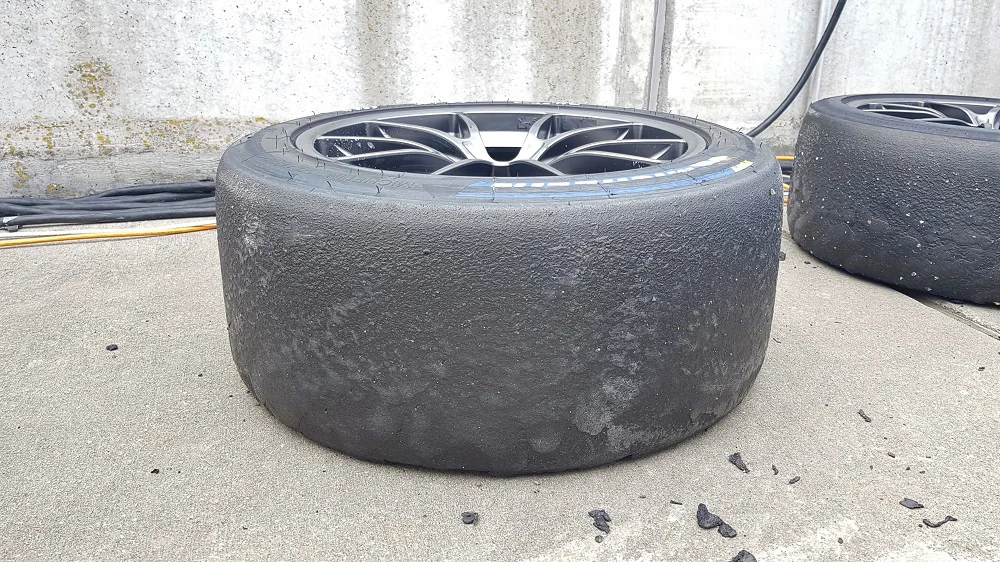Motorsport and Sustainability. An Oxymoron?
Posted by: Immanuel Vinke

My last blog a few weeks ago 'Sustainable Technologies in Motorsport', was just a teaser for part 2 of my sustainable motorsport entries.
In this blog, I will go into more depth on the sustainable technologies in use by fourmotors in the Nurburgring endurance championship.
First up, as you can see from the pictures, the Porsche that I drive has brown bumpers, giving it an unusual look. Now what is the story behind that?
Most of the body panels on this car, not only the bumpers, are made from flax fibre. This is a natural composite from the flax plant and is made by BComp in Switzerland. Most racing cars but also an increasing amount of road cars are implementing carbon fibre as part of lightweighting and strengthening their design. Carbon fibre is very strong, light but also expensive. This is where the flax fibre comes in. Flax fibre is a fraction of the cost yet provides very similar weight and strength.
This all might sound pretty good but where is the sustainability aspect of it?
The issue with carbon fibre is, that it is extremely difficult to recycle once damaged. In most cases, the recycled carbon fibre can only be used for low performance applications such as houseware or accessories. Recycled carbon fibre loses strength and deteriorates in many attributes, meaning the automotive or aeronautical industry has to use virgin material all the time. This is highly energy and raw material consuming. Since flax fibre is plant based, harvesting the raw materials has a small yet positive effect on the CO2 household and most of the biofibre is biodegradable.

Next, I would like to talk about the wheels on the racing car. Sponsor Ronal Wheels has presented the first fully recycled aluminium alloy wheels. All 3 team cars utilise those wheels, evaluating the strength and performance of using material that has been given a second life. A simulation on a PC might be good, yet in a tough environment such as racing with high temperatures, high loads and occasionally contact to other cars, the material is really being put through all its paces. Having recycled materials on wheels gives many environmental benefits, saving on raw material and emissions to extract as well as to process these. Of course, to renew existing, old or tired material is not energy free. In their production facilities, Ronal uses green energy, making the production as greenhouse efficient as possible. Given the scale of industries that require alloy wheels, having recycled material and green energy can bring large benefits in the big picture.

Tyres, especially in racing are a fast consumable. Tyres are swapped every 2 hours roughly and then thrown away. Michelin is one of the first major tyre manufacturers that already now partially make brand new tyres from old ones. Added to that, the tyre production requires several crude oil-based additives or substances. Recycling old material means the use of these additives is decreased. Research continues at Michelin to produce tyres completely free of crude oil-based substances.

A big talking point in the automotive world is brakes and the emissions from brakes. Together with partner Hella Pagid, the team runs copper free brake pads. This has two positive effects, one if the reduced use of copper raw material and second is the deletion of copper dust emissions. There is research for the following years of this programme to use renewable plant-based materials for brake pads but this is something confidential for now.
The great thing about all the above is, that no matter the propulsion system, these sustainable materials are applicable which makes this whole racing programme really worthwhile for me.
I hope you enjoyed my two part blog series!
Thank you for reading
